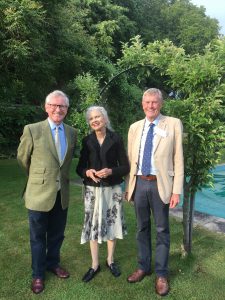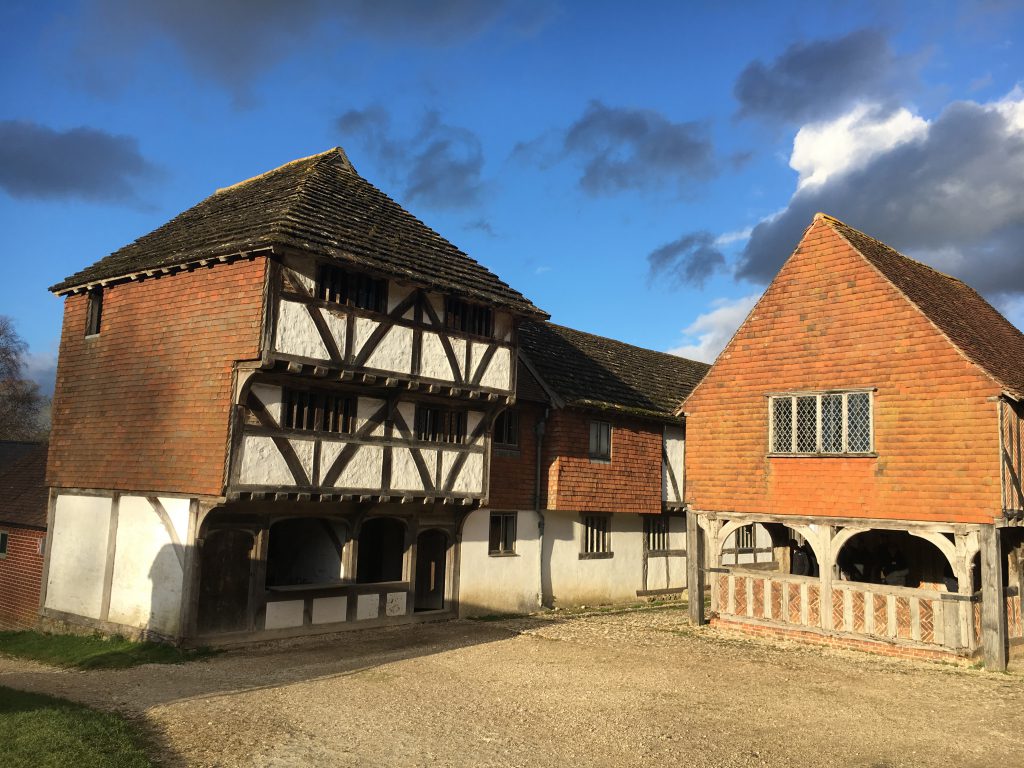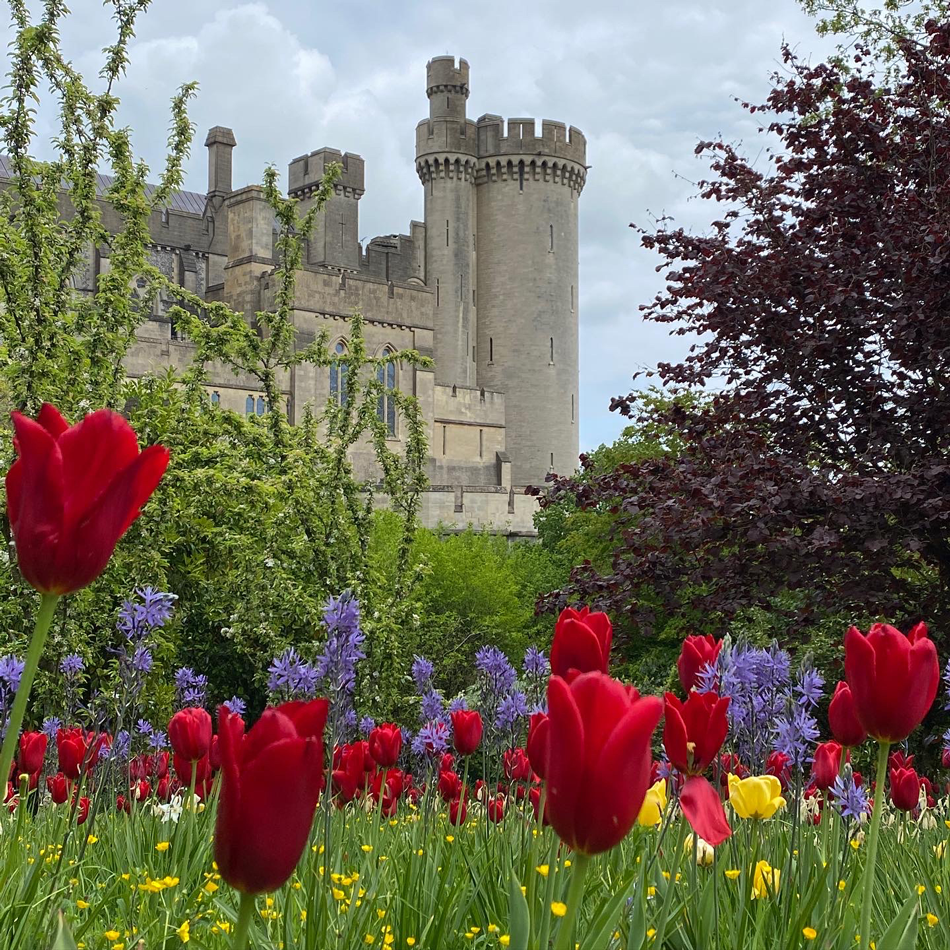
It is a perfect English spring morning, bright and crisp, as supporters of the Sussex Heritage Trust gather in the Collector Earl’s garden at Arundel Castle.
We are greeted by Castle Manager, Andrew Lewis, and Arundel Castle gardeners Rose Philpot and Izzy McKinley.
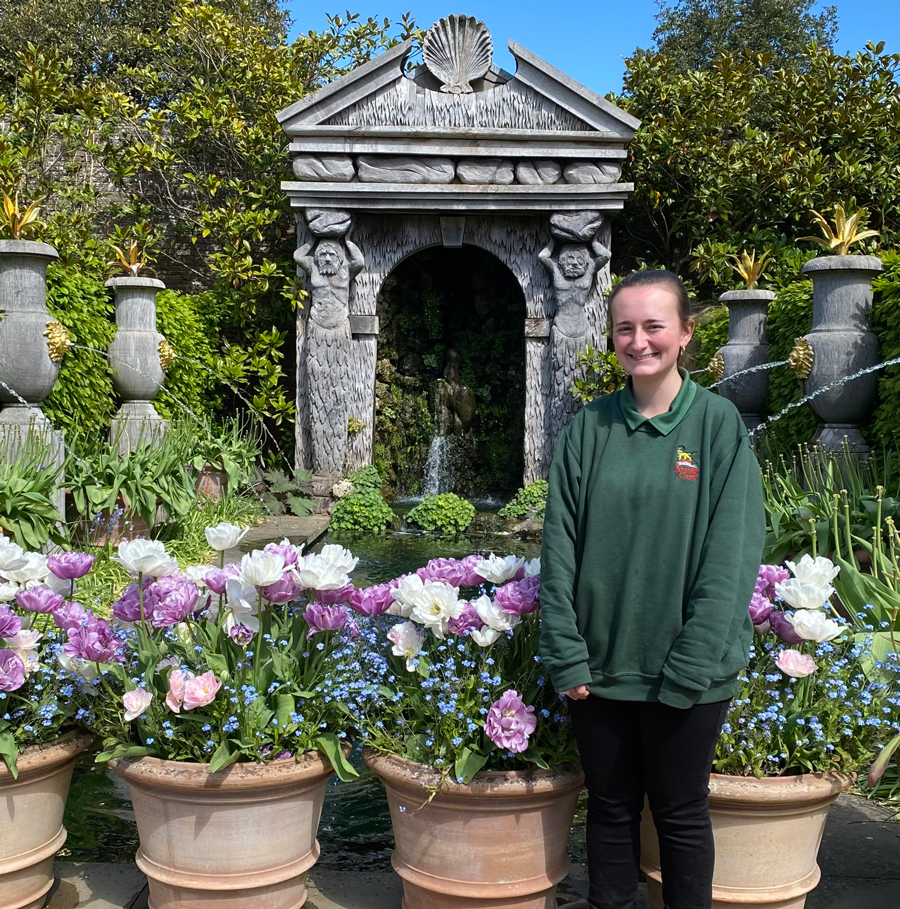
We set out in the company of Rose Philpot and are met by lines of apple trees covered in soft pink blossom amongst a carpet of blue camassia and tulips. The naturalistic planting frames the views of the castle. Rose explains “We lift the tulips in the borders and the pots but leave them in the grass areas. We’ve planted tens of thousands of bulbs and tulips!” The spectacle is breathtaking. It is apparent that this talented young gardener is also a gifted plants woman as she effortlessly guides us through the planting. She constantly refers to Head Gardner, Martin Duncan, and her respect for him quickly becomes apparent.
We pass a stumpery and box cloud hedge which leads us gently downhill to the award winning Stew Ponds. About four years ago Martin Duncan redesigned the historic stew ponds at Arundel Castle. Using the original framework of ponds, in which the Castle and Friars would have kept fish for eating in stews, it has been given new life with a naturalistic quality. The emphasis is on wildlife attracting insects, butterflies, bees and wildfowl. The Duke of Norfolk and Arundel Castle were delighted to receive the Sussex Heritage Trust Award for Gardens and Landscape in 2020. As we arrive at the stew ponds Rose points out the award which is proudly on display.
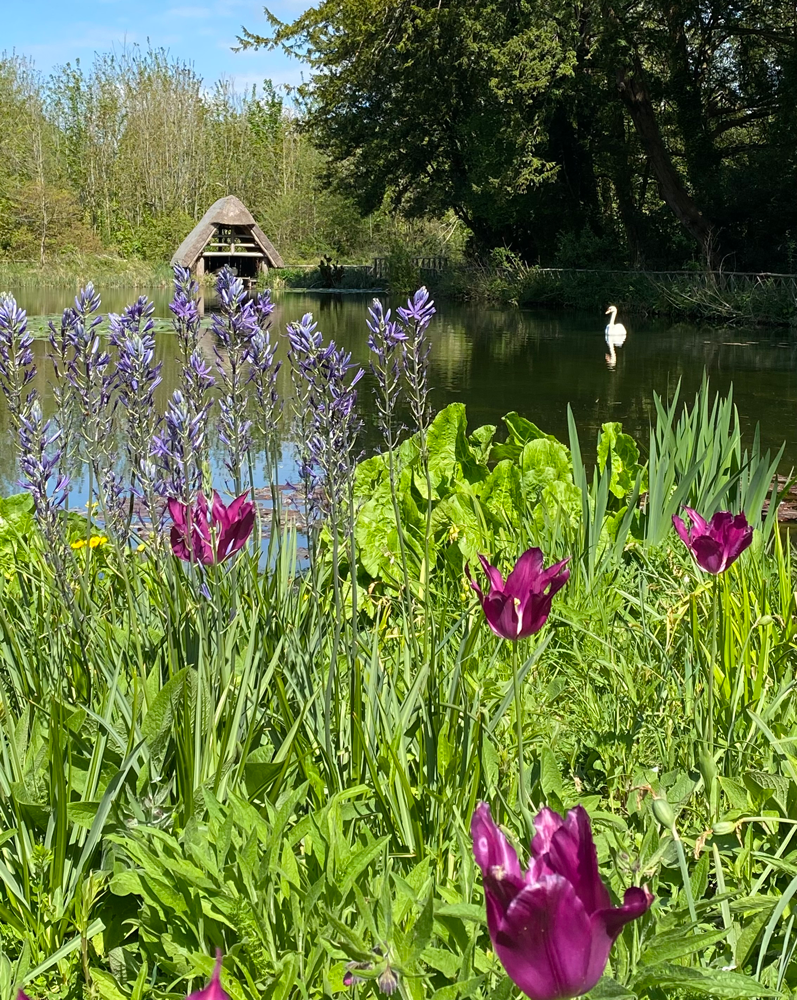
Rose explains how the boathouse you see in the distance was designed by Martin. The timbers were sourced sustainability, mostly from the Estate’s woodland. In the gentle breeze the dance of light on the ripples of the pond is reflected in the naturalistic planting as a Swan glides across the water.
Returning to the Collector Earl’s gardens we come across the water feature which is exotic and unexpected. Rose points out a series of pots overflowing with tulips as she recites the varieties – “Tulipa Angelique, Mount Tacoma and Blue Diamond”.
Rose’s story is hope-filled. She discovered her passion for gardening on work experience in the castle gardens. She volunteered and worked in the gardens whilst she trained at Plumpton and was eventually offered a full-time job. Her career is progressing at Arundel and she has been given responsibility for looking after the stumpery, herbaceous, Round House and cut flower gardens which she speaks about with a real sense of ownership and a gardener’s delight.
The Sussex Heritage Trust’s work is important in promoting best practice in our county’s built environment and landscape whilst encouraging and supporting talented young people into careers in conservation, building and horticulture. To find out more about the work of the Sussex Heritage Trust and Arundel Castle’s extraordinary gardens visit sussexheritagetrust.org.uk and arundelcastle.org.

